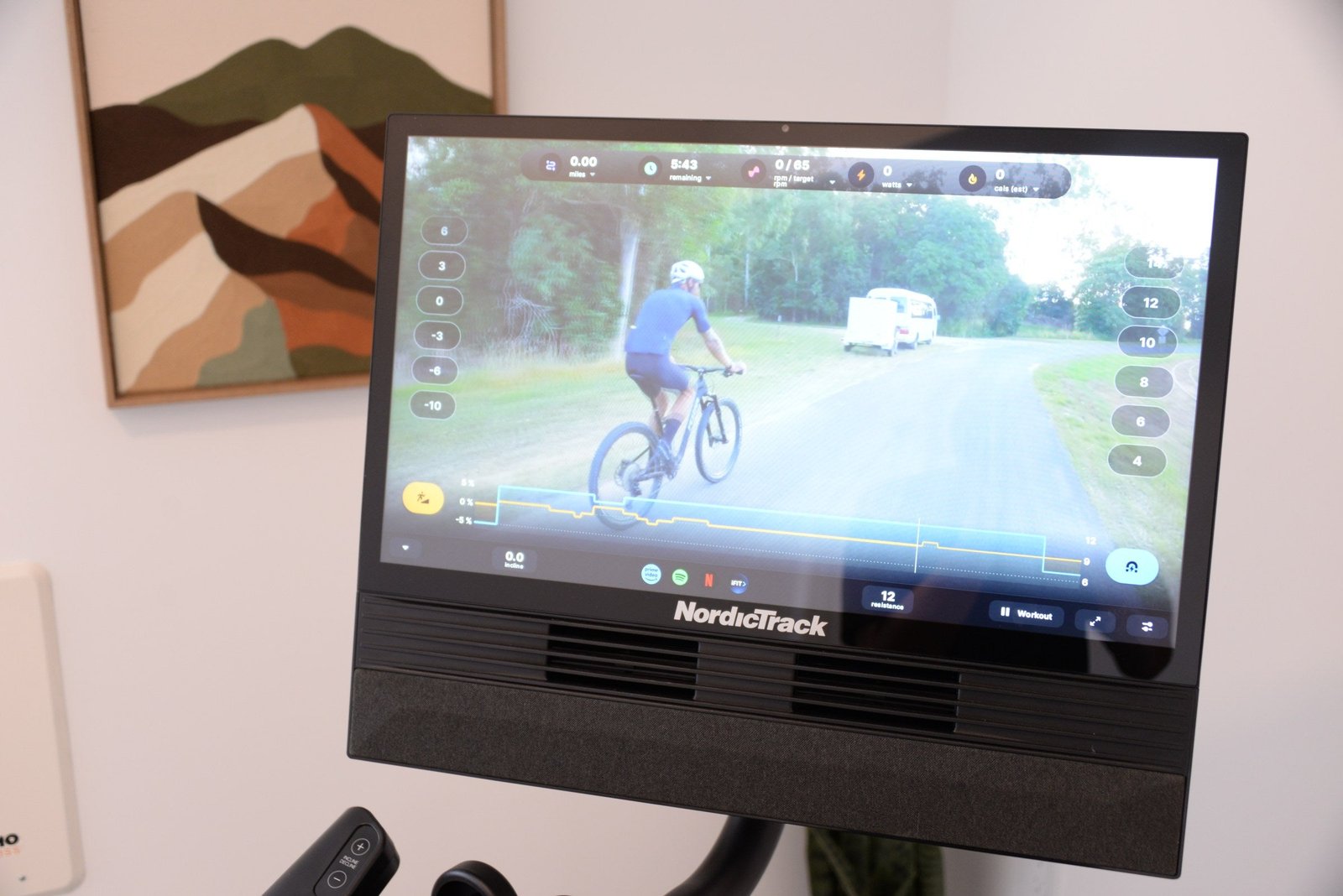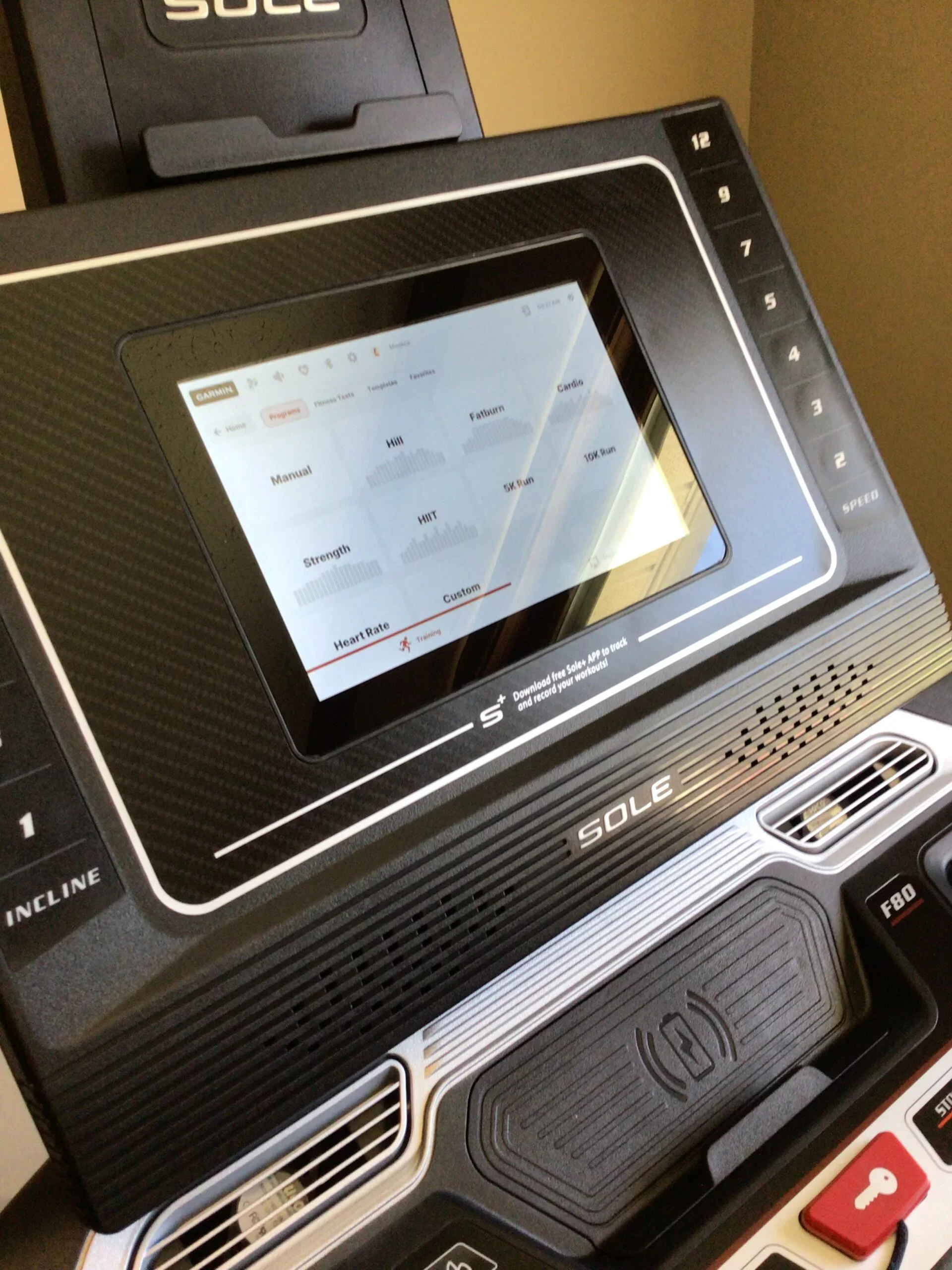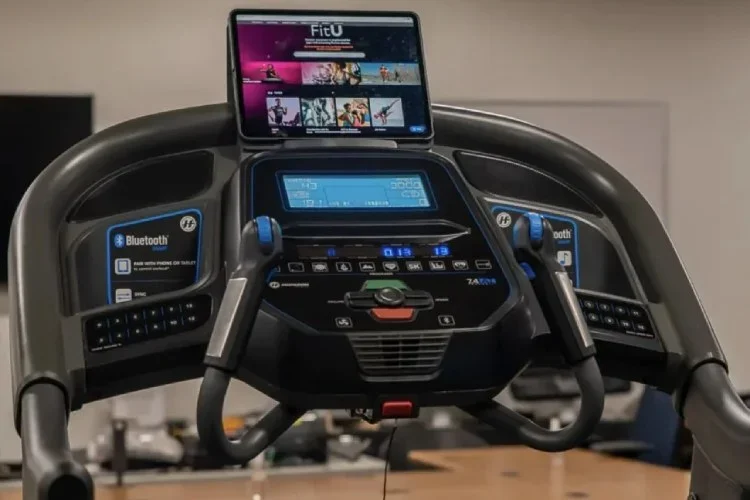
[ad_1]
The humble treadmill has come a long way, even in the few years I’ve been writing reviews. Once a straightforward machine for indoor running, it has evolved into a sophisticated fitness hub, often equipped with vibrant touchscreens, Internet connectivity, and an overwhelming array of digital content. In today’s home gym, the question is no longer just “Which treadmill?” but “Where will I get my workouts?”
At the heart of this decision lies a critical dilemma: Do you invest in a smart treadmill with proprietary, built-in streaming fitness platforms and integrated workouts, or opt for a simpler, more affordable machine that you can pair with your favorite third-party fitness apps on your own tablet or smartphone? Each approach offers distinct advantages and disadvantages, catering to different fitness goals, motivational styles, and budgets.
This deep dive into the world of connected treadmills will help you navigate the options, weigh the pros and cons of built-in ecosystems versus the flexibility of external apps, and ultimately decide which path is best to keep you motivated, engaged, and on track with your fitness journey. If you’re shopping for a new home treadmill, be sure to check out our complete Buyer’s Guide here.

The iFit package offers some of the best video quality on the market. Photo by Roman Kim, TreadmillReviews.net
The All-Inclusive Ecosystem: Built-In Streaming & Proprietary Workouts
Imagine stepping onto your treadmill, pressing a single button, and instantly being transported to a scenic run through the Swiss Alps, a high-energy studio cycling class, or a personalized interval training session led by a world-class coach – all while your machine automatically adjusts its incline and speed to match the terrain or the instructor’s cues. This is the promise of proprietary, built-in streaming platforms found on many modern smart treadmills.
Brands like iFIT (found on NordicTrack and ProForm treadmills), Peloton, Bowflex JRNY, and Echelon have invested heavily in creating integrated fitness ecosystems. When you buy one of their connected treadmills, you’re not just getting hardware; you’re buying into a complete experience designed to deliver immersive, guided workouts directly to your machine’s console.
Typical App Fees
What it is: These systems typically feature large, high-definition touchscreens embedded directly into the treadmill’s console. Through an ongoing subscription, you gain access to a vast library of on-demand and live classes, scenic outdoor runs, guided programs, and personalized coaching. The key differentiator here is the seamless integration: the platform directly controls your treadmill’s incline and speed, creating a truly hands-free and immersive workout.
The Pros of Built-In Streaming | The Cons of Built-In Streaming |
| Seamless Integration & Immersive Experience: This is arguably the biggest selling point. The treadmill automatically adjusts its incline, decline, and speed based on the terrain of a scenic run or the instructor’s cues in a studio class. This hands-free experience allows you to fully immerse yourself in the workout, replicating the feeling of running outdoors or being in a live class without the need for manual adjustments. It minimizes distractions and maximizes engagement. | Higher Initial Cost & Ongoing Subscription Fees: Treadmills with built-in screens and integrated platforms are almost always more expensive upfront than comparable “dumb” treadmills. Furthermore, the proprietary content requires a mandatory, often significant, monthly or annual subscription fee. If you stop paying, you lose access to the vast majority of the “smart” features, often leaving you with a very expensive basic treadmill. |
| Motivation & Engagement: The content is specifically designed for the machine, often featuring high-production value, charismatic trainers, and stunning videography. Many platforms include gamification elements, leaderboards, and community features that foster a sense of competition and camaraderie, pushing you to achieve more. The variety of workouts, from high-intensity interval training (HIIT) to endurance runs and even cross-training options, keeps things fresh and prevents boredom. | Vendor Lock-in: You are tied to that specific brand’s content library. If you find the trainers don’t resonate with you, the music isn’t to your taste, or the workout styles don’t suit your preferences, you’re essentially stuck. You’ve invested in their ecosystem, and switching to another platform means buying ew hardware or losing the integrated experience. |
| Convenience: Everything you need is right there on the console. There’s no fumbling with external devices, ensuring your tablet is charged, or finding a suitable mount. You simply step on, select your workout, and go. This plug-and-play simplicity can be a huge motivator, reducing friction points that might otherwise deter a workout. | Dependence on Wi-Fi: Streaming high-definition video content requires a strong, stable Wi-Fi connection. If your connection is spotty, you could experience buffering, interruptions, or be unable to access workouts at all, leading to frustration and disrupted training. |
| Brand Loyalty & Consistency: The entire experience is curated by a single brand, leading to a consistent user interface, data tracking, and workout philosophy. This can be appealing to users who prefer a streamlined, unified approach to their fitness journey. Your workout data often integrates seamlessly into the brand’s app, providing a comprehensive overview of your progress within their ecosystem. | Screen Size and Quality Variation: While many built-in screens are impressive, some models, particularly at lower price points, may have smaller screens or lower resolution displays, diminishing the immersive quality of the content. |
| Personalized Coaching (often): Many platforms offer adaptive training, where the system learns from your performance and adjusts future workouts to your fitness level and goals. This can feel like having a personal trainer guiding you through every step. | Obsolescence: Technology evolves rapidly. The built-in console, operating system, and hardware can become outdated over time. This might lead to slower performance, lack of support for new features, or even compatibility issues with future content updates, long before the mechanical parts of your treadmill wear out. |
| Limited Choice: While the content library might be extensive, you’re still limited to what that specific company offers. You can’t easily jump to a popular workout from another platform without losing the integrated control. |

Zwift is among the more popular third-party apps on the market. Photo by TreadmillReviews.net
The Flexible World of Third-Party Fitness Apps
In contrast to the all-in-one solution, many exercisers opt for a more modular approach: a high-quality, non-smart treadmill combined with their personal tablet or smartphone running a diverse array of third-party fitness apps. This method emphasizes flexibility, variety, and often, significant cost savings.
What it is: This setup involves purchasing a treadmill that might have a basic console (displaying speed, distance, time, calories), a media shelf, or a tablet holder. You then subscribe to (or use free versions of) popular fitness apps like Zwift, Peloton Digital (the app-only version), Nike Run Club, Aaptiv, Runkeeper, Apple Fitness+, Tonal (audio-focused), Les Mills+, and countless others. Your tablet or phone acts as your workout screen, and you manually adjust your treadmill’s settings as guided by the app.
The Pros of Third-Party Fitness Apps | The Cons of Third-Party Fitness Apps |
| Cost-Effectiveness: Generally, treadmills without integrated screens and proprietary software are significantly cheaper upfront. While you’ll still pay for app subscriptions, the cumulative cost of the treadmill plus multiple app subscriptions can often be less than a high-end smart treadmill with its single, high-cost subscription. You can choose free apps or budget-friendly ones. | Lack of Integration & Manual Adjustment: This is the most significant trade-off. Your treadmill will NOT automatically adjust incline or speed based on the app’s instructions. You’ll need to manually change these settings as prompted by the trainer or as dictated by the program. This can break immersion and requires more active participation during the workout. |
| Flexibility & Variety: This is where third-party apps truly shine. You have the freedom to access a vast universe of fitness content. If you get bored with one app, you can easily switch to another without needing new hardware. This means access to countless trainers, workout styles (running, strength, yoga, meditation), and music choices. | Less Immersive Experience: Relying on a smaller screen (your phone or tablet) mounted on the treadmill can feel less immersive than a large, integrated display. The “in the moment” feeling of a scenic run or studio class might be diminished. |
| No Vendor Lock-in: Your loyalty is to your fitness goals, not a single brand’s ecosystem. If a new, exciting app emerges, you can try it. If a trainer leaves an app you love, you can find another platform. This freedom of choice keeps your workouts fresh and adaptable to your evolving preferences. | Setup & Clutter: You’ll need a stable place to put your device, whether it’s a built-in media shelf or a separate tablet holder. There might be cables for charging, and potentially a less streamlined look compared to a fully integrated console. |
| Device Agnostic & Future-Proofing: You use your own tablet or smartphone, a device you likely already own and regularly update. This means your “screen” is always up-to-date, benefiting from software improvements and better processing power independently of your treadmill. When you upgrade your phone, your treadmill experience effectively upgrades too. | Motivation Requires More Self-Discipline: While apps provide guidance, the lack of automatic control might mean you need slightly more self-discipline to stick to the suggested adjustments. There’s less “hand-holding” than with an integrated system. |
| Personalization on Your Terms: You can mix and match. Perhaps you use one app for guided runs, another for strength training off the treadmill, and a third for mindful cool-downs. This allows you to build a truly personalized fitness routine that integrates various modalities. | Fragmented Data Tracking: If you use multiple apps, your workout data might be scattered across different platforms, making it harder to get a holistic view of your progress unless you manually input data or use a third-party aggregator. |
| Diverse Content: Beyond traditional running workouts, many third-party apps offer a broader range of content, from guided outdoor runs using GPS, to audio-only coaching, to strength training, and even dietary guidance, often accessible through a single subscription. | Content Overload: While variety is a pro, it can also be a con. With so many apps and options, choosing the “best” one can be overwhelming, leading to decision fatigue or constantly jumping between platforms. |

The Sole F80 comes with a very handy and user-friendly monitor for use with apps and built-in programs. Photo by Brian Boyce
The Hybrid Approach & Key Considerations
It’s also worth noting that some users adopt a hybrid approach. They might own a smart treadmill with built-in streaming but also use a third-party app on their phone for specific types of workouts, like a favorite guided outdoor run, or for cross-training content not offered by their treadmill’s platform. This offers the best of both worlds but often comes with the highest overall cost.
When deciding between built-in streaming and third-party apps, consider these critical factors:
- Budget: What’s your overall financial commitment, both the upfront treadmill cost purchase and long-term subscription fees? Calculate the total cost over 3-5 years.
- Workout Style & Preferences:
- Do you crave the feeling of running outdoors on varied terrain, guided by interactive video? Built-in excels here.
- Do you prefer high-energy studio classes where you don’t have to think about adjustments? Built-in is ideal.
- Are you more of a self-paced runner who likes to listen to music or podcasts? Third-party apps are perfect.
- Do you enjoy following structured training plans, but don’t mind manual adjustments? Third-party apps work well.
- Motivation Level: Do you thrive on the external motivation of instructors, leaderboards, and automatic adjustments? Or are you self-motivated and disciplined enough to follow cues from a screen and adjust manually?
- Tech Savviness & Convenience: Are you comfortable managing multiple apps, ensuring devices are charged, and potentially troubleshooting connectivity issues? Or do you prefer an incredibly simple, all-in-one solution where everything just works?
- Space & Setup: Do you have a convenient and secure place to mount or place your personal device, or is a fully integrated screen a cleaner solution for your workout space?
- Longevity & Future-Proofing: How concerned are you about the built-in tech becoming outdated? With third-party apps, your external device (phone/tablet) can be upgraded independently of the treadmill, ensuring access to the latest app features.
- Connectivity: Regardless of your choice, a strong and reliable home Wi-Fi network is crucial for seamless streaming of any content.

The Horizon T202 offers a hybrid approach, with built-in apps and streaming capability via a media rack and your own tablet or phone. Photo by TreadmillReviews.net.
Conclusion
The evolution of treadmills into connected fitness machines offers unprecedented opportunities for engaging and effective home workouts. However, there’s no universal “best” answer when it comes to choosing between built-in streaming ecosystems and the flexibility of third-party fitness apps.
Built-in systems offer unparalleled immersion, seamless integration, and a highly curated, convenient experience. They’re ideal for those who prioritize a hands-free, automated workout journey and are willing to invest in a specific brand’s ecosystem for the long haul.
Third-party apps, conversely, provide incredible flexibility, cost-effectiveness, and a vast diversity of content, allowing you to curate your own fitness journey without vendor lock-in. They’re perfect for those who value variety, are comfortable with manual adjustments, and prefer to use their existing devices.
Ultimately, the optimal choice depends entirely on your individual needs, budget, and how you stay motivated. Before making a significant investment, consider your personal preferences: Do you crave seamless automation, or do you value boundless variety? Do you thrive on a guided experience, or are you an independent fitness explorer?
I’d encourage you to explore detailed reviews of specific treadmills on TreadmillReviews.net, paying close attention to their console features, connectivity options, and any associated subscription services. Try to demo machines if possible and read user reviews to understand real-world experiences. By carefully weighing these factors, you can make an informed decision that will keep you running towards your fitness goals, happily ever after.
[ad_2]
Source link





